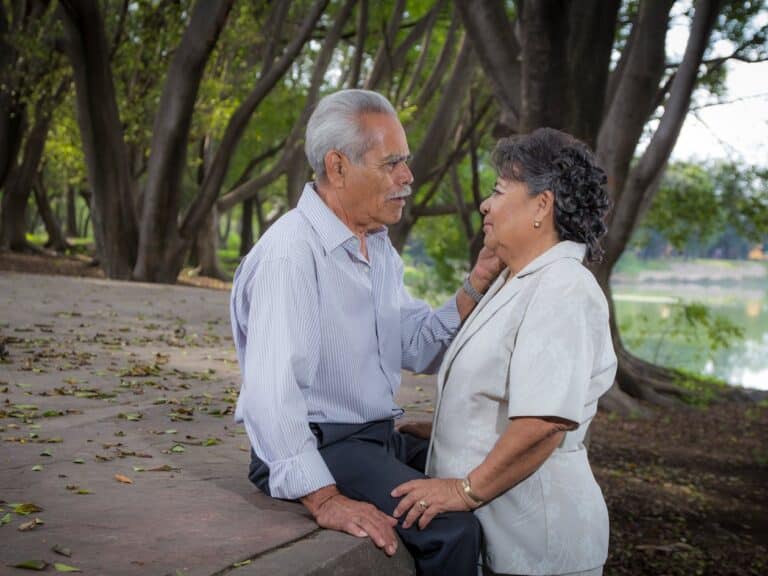Parkinson’s disease is a chronic, degenerative and progressive neurological disorder characterized by tremors, slowed reflexes, stiffness, poor balance and difficult moving. Parkinson’s disease affects 10 million people worldwide and is more common among those over 60 and men. The combination of traditional and natural treatment methods, such as exercise, dietary and lifestyle changes can slow the progress of the disease and reduce symptoms.
In this article, I will talk about what Parkinson’s disease is, its symptoms, complications, causes, and treatment options.
What Is Parkinson’s Disease?
Parkinson’s disease is a chronic, degenerative neurological disorder characterized, as mentioned, by poor balance, difficulty walking, muscle stiffness, limb rigidity, and tremors. Symptoms may vary from person to person, but in most cases, simple daily tasks can become a chore. Symptoms tend to persist and progress over time.
Treatment methods and success differ from patient to patient, some experience better results with natural methods than others. Parkinson’s disease affects older people more often than younger ones, and men over women in most cases. (1, 2, 3, 4)
Symptoms Of Parkinson’s Disease
- Tremor: Tremor or shaking starting in a limb, often in your fingers or hand.
- Slowed movement (bradykinesia): Over the progress of the disease, Parkinson’s leads to slowed movement and reduced ability to perform movement-related tasks, including walking or getting out of a chair.
- Rigid muscles: Parkinson’s leads to muscle stiffness that limits the range of motion and leads to pain.
- Impaired balance and posture: Parkinson’s’ can lead to balance and postural problems.
- Speech changes: Parkinson’s disease may change someone’s speech to soft, slurred, quick, hesitant, or monotone.
- Writing changes: Parkinson’s may make writing difficult or lead to smaller handwriting.
- Cramping (dystonia): Parkinson’s may come with twisting or tightening of one’s muscles.
- Drooling (sialorrhea): Compromised motor symptoms can lead to difficulty swallowing, excessive saliva, or drooling.
- Dyskinesia; Parkinson’s may be characterized by involuntary and erratic facial, trunk, leg, and arm movements.
- Festination: Parkinson’s may be characterized by short and rapid steps while walking leading to more falls.
- Freezing: Parkinson’s can lead to freezing what seems like being stuck in place during movement which can increase the risk of falling.
- Masked face (hypomimia): The combination of bradykinesia and rigidity can lead to a masked face.
- Shuffling gait: Parkinson’s may be characterized by short steps and a stooped posture. (3, 5)
Complications of Parkinson’s Disease
Parkinson’s can lead to or may be accompanied by other problems, such as (3):
- Thinking difficulties
- Depression
- Emotional changes
- Sleep problems
- Problems swallowing
- Bladder problems
- Constipation
- Fatigue
- Pain
- Smell dysfunction
- Blood pressure changes
- Sexual dysfunction
Why Parkinson’s Disease Occurs?
Parkinson’s disease is a neurological disorder where certain neurons in your brain start to break down and die. The loss of specific neurons that produce dopamine, a chemical brain messenger leads to the decrease of dopamine levels that leads to abnormal brain activity and many of the uncomfortable symptoms of the disease.
Why Parkinson’s occurs is unknown, but it seems that both genes and the environment can play a role in the development of the disease.
Genes: Certain uncommon genetic mutations can cause Parkinson’s disease in rare cases where other family members have been affected by the disease. Certain gene variations can also slightly increase the risks of the condition. Genetic testing is currently available for research purposes only.
Environmental triggers: Exposure to certain toxins or environmental factors can also increase risks on a small level. Head injuries, age, gender, residence (living close to environmental toxins), and occupation (intensive physical labor and working with toxins) may increase the risks of Parkinson’s.
Changes in the brain: Certain changes in the brain can occur in people with Parkinson’s disease, but why and when these changes happen is unknown at this point. One of these changes is the presence of Lewy bodies, clumps of specific substances in the brain cells, and also alpha-synuclein proteins found in these Lewy bodies.
Parkinson’s research is ongoing and as time goes the scientific and medical community will gain more understanding of the causes of the disease. (3, 6, 7)
Will Parkinson’s Disease Kill You?
Parkinson’s disease is a chronic condition but it is not a death sentence. Parkinson’s itself won’t kill you. Certain complications, such as trouble swallowing, dementia, or serious falls can lead to death. Early diagnosis and treatment can help the progress of the disease, your symptoms, and your quality of life. You may want to consider famous people, such as Michael J. Fox, Salvador Dali, and Pope John Paul II who live or live a productive life with Parkinson’s. (8, 9)
How Parkinson’s Disease Is Treated?
There is no standard treatment for Parkinson’s disease at this time. Treatment and results change from patient to patient based on their symptoms. Treatment often includes medication and sometimes surgical therapy. Treatment can also include lifestyle modification. Exercise and rest are both important tools in both the treatment and prevention of the disease. (10, 11)
Conventional Methods for Treatment of Parkinson’s (10, 12, 13):
- Symptomatic treatments: Pharmaceuticals, including levodopa, Inosine, and Carbidopa focus on treating symptoms of Parkinson’s.
- Neuroprotective treatments: Surgeries such as Deep Brain Stimulations (DBS) and tissues removal are forms of neuroprotective treatment
- Cure-based strategies: Certain treatment methods, specifically on different methods and uses of DBS are still being investigated for their impact on Parkinson’s.
Natural Methods of Treatment for Parkinson’s
Best foods for Improving Parkinson’s:
Adding nutrition-dense, fresh, organic whole foods, such as greens, vegetables, fruits and more can be beneficial for people with Parkinson’s.
- Raw foods; Raw green, vegetables, and greens are high in antioxidants and can fight inflammation and pain in the body.
- High-fiber foods: Foods rich in fiber can help with bowel functions which can be a problem for those with Parkinson’s.
- Healthy fats: Healthy fats, such as avocado, coconut, nuts, seeds, and wild-caught fish can improve brain and neurological functions, as well as one’s mood.
- Cold-pressed oils: Cold-pressed oils are rich in essential vitamin E and can reduce inflammation.
- Omega-3: Omega-3 supplements and foods rich in omega-3s, such as wild seafood, algae, seeds, and nuts, can boost dopamine levels and improve inflammation.
- Fresh vegetable juices: Green juices can help with hydration and constipation.
- Moderate protein intake: Keeping protein intake low to moderate can improve symptoms.
- Green tea: Green tea is rich in antioxidants and can elevate dopamine.
Remove Foods that Can Make Parkinson’s Symptoms Worse:
- Avoid excessive protein
- Remove processed foods
- Eliminate refined sugar and artificial sweeteners
- Reduce or eliminate alcohol
- Remove any potential food allergens and foods you may be sensitive to
Supplements That Can Improve Parkinson’s
Along with a healthy diet, specific supplements can help the progress and symptoms of Parkinson’s disease (11):
- Coenzyme Q10: It is a powerful antioxidant that can help the mitochondria and slow the progression of the disease.
- Vitamin C: Vitamins C is a fantastic antioxidant that supports immune function and prevents free radical damage.
- Vitamin E: Vitamin E is an antioxidant that supports the brain.
- Spirulina, chlorella, or wheatgrass; Green powders are abundant in minerals and help detoxification.
- Omega-3: Omega-3 fish or algae oil can reduce inflammation and support neurological and brain health.
- Vitamin D: Vitamin D is essential for bone and muscle health.
- Calcium: Calcium is important for bone health.
- Ginger: Ginger is great for nausea and inflammation.
- Folate: Folate is beneficial for healthy brain function.
- Milk thistle: Milk thistle helps with liver function and detoxification.
- St. John’s Wort: St. John’s Wort is helpful for depression and mood changes.
Exercise for Parkinson’s Disease
Exercise is one of the most important tools that can slow the progress, reduce the symptoms and lower the risk of complications of the disease. While people with Parkinson’s may not always be able to exercise the way or as much as they once did, research shows that appropriate physical activity can help treatment and quality of life. It can lower inflammation, improve one’s mood, and boost cognitive health and neurological function. (15, 16)
Tips for exercise:
- Move with caution: Don’t move too quickly and use canes or other supportive devices if needed. Adjust your posture, look straight ahead, and use a heel strike roll through your feet forward.
- Stretch to prevent and reduce muscle stiffness, soreness, and pain. Stretch your arms, knees, shoulders, and legs. Physical therapy can help you with specific methods to help your personal case.
- Practice mind-body exercises such as tai chi or yoga to maintain balance and improve your mood. (17)
- Try water aerobic aerobics. Exercise in the water has less impact on your joints and there is no risk of falling. It can increase strength, flexibility, balance, range of motion, and recovery. (18)
Acupuncture for Parkinson’s
Research has shown that acupuncture can help to improve the symptoms of Parkinson’s disease, particularly inflammation, pain, stiffness, insomnia, and anxiety. (19)
Treatment differs from person to person and no natural treatment can guarantee results. Always consult your doctor to find the appropriate lifestyle and dietary changes and start a beneficial exercise regimen for you.
Frequently Asked Question
Q. When does Parkinson’s start?
A. Parkinson’s disease can start at any age, but it is more common among older people over 60.
Q Why does Parkinson’s disease develop?
A. The exact cause of Parkinson’s is unknown. Reasons can be genetic, environmental, or lifestyle factors.
Q. How does Parkinson’s disease cause death?
A. Parkinson’s itself won’t kill you but complications such as breathing difficulties, dementia, and serious falls can lead to death.
Q. Can Parkinson’s disease be inherited?
A. There is small evidence that in some cases Parkinson’s can be caused by a gene mutation that is not inherited through can happen to several people within the same family.
Q. Can Parkinson’s disease be prevented?
A. There is little known about the prevention of Parkinson’s. A healthy, whole-foods diet, exercise, and staying away from environmental toxins is your best bet to reduce your risks.
Q. Can Parkinson’s disease develop because of stress?
A. There is no evidence at this point that Parkinson’s can develop because of stress, however, symptoms can worsen due to stress.
Q. What are the main signs of Parkinson’s disease?
A. The cardinal signs of Parkinson’s include tremors, rigidity, and bradykinesia. You can read the many other possible symptoms of Parkinson’s in this article.
Parkinson’s disease is a progressive chronic neurological condition. With any disease, early detection is important to find the appropriate treatment methods and slow progress. If you notice any signs of Parkinson’s, visit your doctor. With appropriate treatment, including natural methods, such as exercise, diet, and lifestyle changes you can improve your symptoms, slow the progress of the disease and live a fulfilling life.
Did you find this article helpful? Share your feedback, experiences, and questions in the comments below.
References:
- https://www.hopkinsmedicine.org/neurology_neurosurgery/centers_clinics/movement_disorders/conditions/parkinsons_disease/index.html
- http://www.parkinson.org/understanding-parkinsons/what-is-parkinsons
- https://www.mayoclinic.org/diseases-conditions/parkinsons-disease/symptoms-causes/syc-20376055
- https://medlineplus.gov/parkinsonsdisease.html
- http://www.parkinson.org/Understanding-Parkinsons/Movement-Symptoms
- http://www.parkinson.org/Understanding-Parkinsons/Causes-and-Statistics/Genetic-Factors
- http://www.parkinson.org/Understanding-Parkinsons/Causes-and-Statistics/Environmental-Factors
- https://www.griswoldhomecare.com/blog/parkinsons-life-expectancy-what-can-you-expect/
- https://www.theguardian.com/lifeandstyle/2014/oct/05/early-onset-parkinsons-normal-lives
- http://www.parkinson.org/understanding-parkinsons/treatment
- http://www.parkinson.org/Understanding-Parkinsons/Treatment/Over-the-Counter-and-Complementary-Therapies
- https://www.ncbi.nlm.nih.gov/pubmed/29452685
- https://www.ncbi.nlm.nih.gov/pmc/articles/PMC5382944/
- https://www.webmd.com/parkinsons-disease/guide/eating-right-parkinsons
- https://www.ncbi.nlm.nih.gov/pubmed/23720332
- https://www.ncbi.nlm.nih.gov/pmc/articles/PMC3136051/
- https://www.ncbi.nlm.nih.gov/pubmed/24519923
- https://www.ncbi.nlm.nih.gov/pubmed/24519923
- https://www.ncbi.nlm.nih.gov/pubmed/24519923











 Subscribe to Ask Dr. Nandi YouTube Channel
Subscribe to Ask Dr. Nandi YouTube Channel










